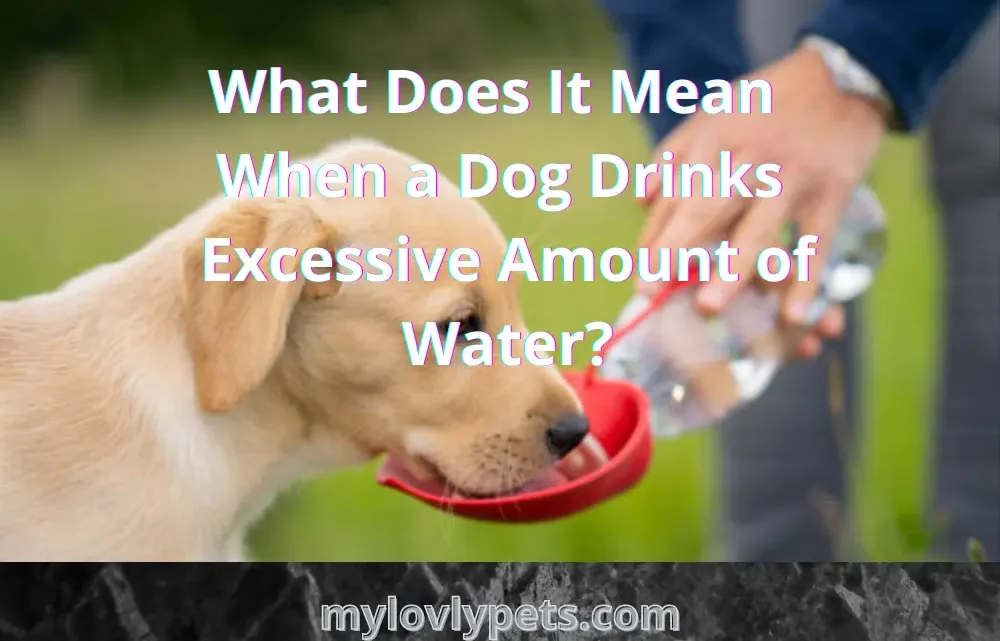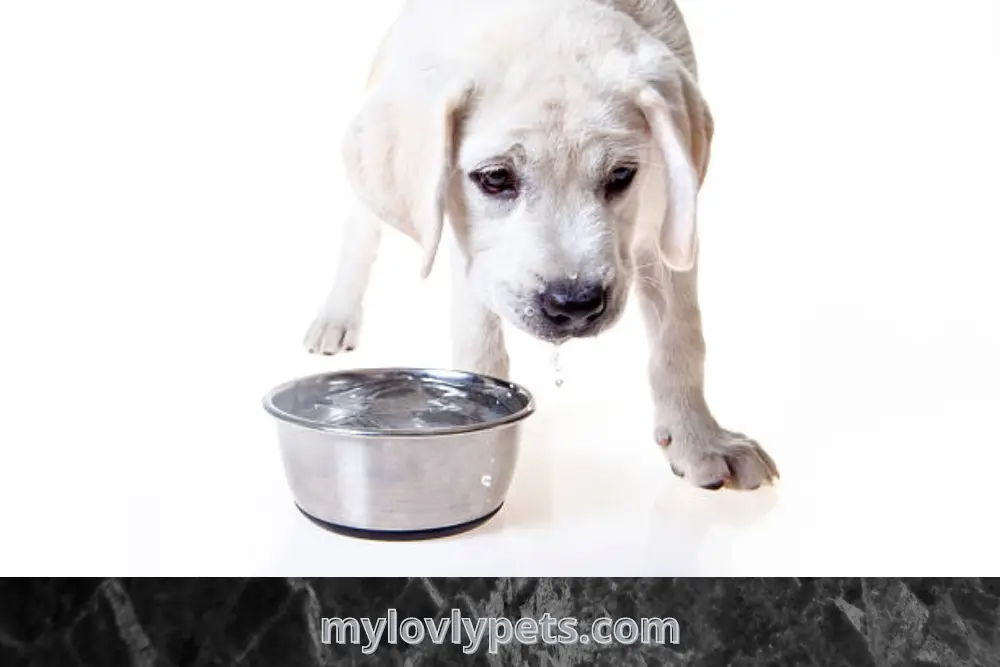
How Long Do Dogs Drink a Lot of Water Before They Die?
Many owners search this question because they’re scared.
Their dog suddenly drinks too much water, and their mind jumps straight to the worst-case scenario.
This guide keeps things simple, clear, and realistic.
No dramatic language. No confusing medical terms.
Just the answers you actually need.
Short Answer
There is no specific number of days or hours where “a dog drinks a lot before it dies.”
Excessive drinking is not a sign that death is coming.
It’s a sign that something in the body isn’t right.
Some dogs drink too much for:
- Weeks
- Months
- Only a few days
- Or not at all if they’re actually close to dying
The truth is simple:
Excessive drinking is a symptom, not a countdown.
The real danger appears when drinking is paired with vomiting, weakness, refusing food, or trouble breathing.
Why Dogs Drink a Lot of Water
Dogs drink more water when their body is trying to:
- Flush toxins
- Balance sugar levels
- Rehydrate
- Cool down
- Fight infections
- Manage hormones
- Replace fluids lost through vomiting or diarrhea
The drinking itself is not the disease.
It’s the body’s attempt to protect your dog.
Below are the real causes explained simply.
1. Kidney Problems
Why it happens
Weak kidneys can’t filter waste properly.
The body responds by increasing thirst to dilute toxins.
How long it lasts
- Weeks
- Months
- Slow decline
Dogs drink more in the early stages, then stop drinking near the end.
Common signs
- Peeing large amounts
- Drinking at night
- Weight loss
- Ammonia-like breath
2. Diabetes
Why it happens
High sugar levels pull water out of the body, causing constant thirst.
Timeline
- Starts early
- Can last weeks or months
Other signs
- Always hungry
- Weight loss
- Low energy
A diabetic crisis can cause vomiting and deep breathing.
This stage progresses fast, but heavy drinking usually happens before the crisis, not during the final hours.
3. Cushing’s Disease
Why it happens
Too much cortisol (stress hormone) increases thirst.
Timeline
- Slow changes
- Months to years
Other signs
- Pot-belly shape
- Thin skin
- Hair loss
- Constant panting
Cushing’s is a long-term condition, not a sudden sign of death.
4. Heatstroke
Why it happens
The body overheats and desperately tries to cool down.
Timeline
- Rapid increase in thirst
- Decline within minutes or hours
Danger signs
- Hot body
- Red tongue
- Panting hard
- Collapse
This is one of the few “drink a lot → collapse soon” situations.
It’s an emergency.
5. Pyometra (Unspayed Females)
A serious uterine infection that causes:
- Sudden heavy drinking
- Vomiting
- Low energy
- Fast decline if untreated
This condition can be fatal without surgery or emergency treatment.
6. Infections and UTIs
These cause drinking to increase for a few days while the body fights the infection.
Timeline
- Usually 1–3 days
- Returns to normal after treatment
Not a sign of dying unless ignored for too long.
7. Medications
Some medications naturally increase thirst, such as:
- Prednisone
- Furosemide
- Some seizure drugs
This is usually harmless unless paired with other symptoms.
8. Toxins
Salt, antifreeze, and rat poison can cause sudden and intense thirst.
Timeline
- Onset within minutes to hours
- Followed by vomiting, shaking, or collapse
This requires immediate help.
How Long Do Dogs Drink a Lot Before They Die?
Here’s the simple breakdown:
Chronic Diseases (Long Timeline)
Kidney disease
- Drinking heavily for weeks or months
- Drinking decreases near the end
Diabetes
- Drinking heavily for weeks or months
- Crisis can cause fast decline (1–3 days)
Cushing’s disease
- Drinking heavily for months or years
- Not a sign of death approaching
Acute Conditions (Short Timeline)
Heatstroke
- Drinking → collapse within minutes or hours
- Emergency
Toxins
- Drinking → shaking → collapse within hours
- Emergency
Severe infections
- Drinking heavily for 1–3 days
- Gets worse quickly without treatment
Red Flags That Mean “Don’t Wait”
Seek urgent care if heavy drinking happens with:
- Vomiting
- Very low energy
- Refusing food
- Weight loss
- Constant urination
- Confusion
- Swollen belly
- Ammonia breath
- Collapse
If thirst + another major symptom appears, treat it as urgent.
Do Dogs Drink More Right Before Death?
Short answer: No.
Most dogs near the end:
- Drink less
- Stop eating
- Sleep more
- Become weak
- Breathe shallowly
These are the true signs of the final 24–48 hours — not excessive drinking.
Why People Think Drinking Means Death Is Near
Many owners see a dog drink a lot for months due to a disease.
Eventually, the disease gets worse and the dog passes away.
So they assume the drinking predicted the death.
But in reality:
The disease caused the drinking early
→ and caused the death later.
The drinking was not the warning sign.
How Long Can a Dog Survive Without Water?
- 24 hours: mild dehydration
- 48 hours: organs stressed
- 72 hours: survival unlikely
This also shows why dying dogs usually stop drinking.
When to See a Vet
Use these simple rules:
Rule 1: Drinking heavily for more than 48 hours → vet visit
Rule 2: Drinking + vomiting or sluggish behavior → emergency
Rule 3: If something feels off, trust your instincts
You know your dog better than anything online.
Before the Vet Visit: Quick Checklist
- Measure 24-hour water intake
- Check urine color
- Check gum moisture
- Note any new foods, meds, or heat exposure
- Bring a fresh urine sample if you can
These help the vet diagnose faster.
What You Can Do at Home
While waiting for the appointment:
- Keep clean water available
- Don’t limit their water
- Offer broth or wet food
- Avoid salty treats
- Keep them cool
- Reduce stress
Final Takeaway
Dogs do not drink a lot of water right before death.
They drink a lot because their body is responding to a problem.
The question isn’t:
“How long until they die?”
The real question is:
“What’s causing this, and how long has it been happening?”
If your dog is drinking too much, don’t guess.
Get them checked.
Early treatment can change everything.



